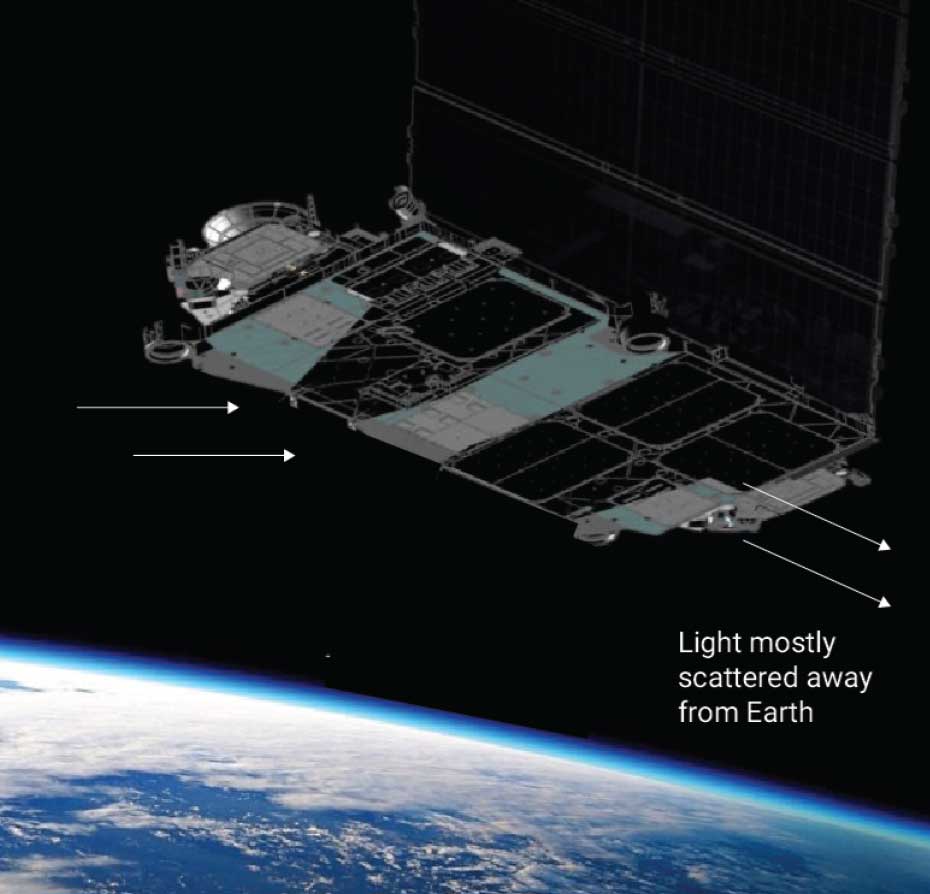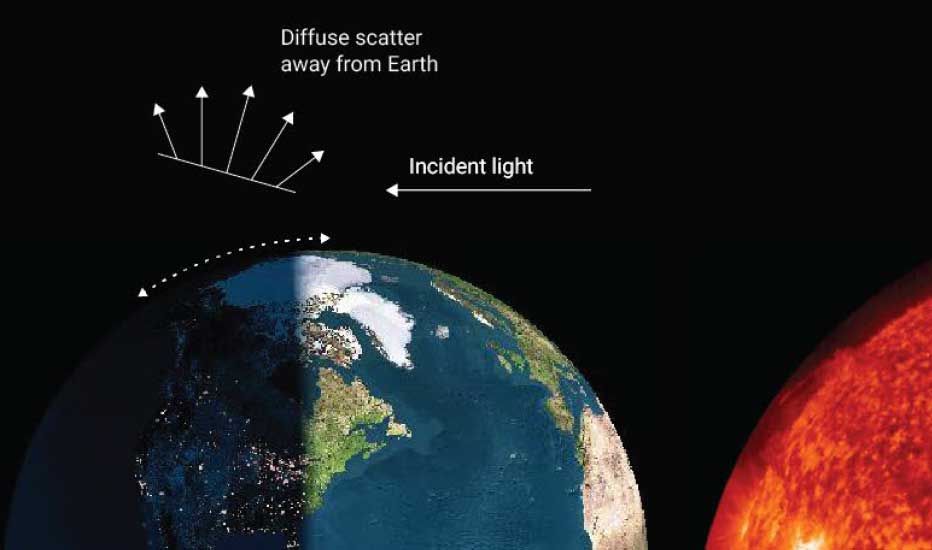Despite being four times larger than the original Starlink satellites, the new “Mini” version is fainter.
SpaceX launched their first batch of second-generation Starlink satellites on February 27th. These spacecraft are called “Mini,” but they are only small in comparison to the full-size satellites that will come later. The 116 square meters of surface area make them more than four times the size of the first-generation spacecraft.
The Minis’ large dimensions were an immediate concern for professional and amateur astronomers alike because area usually translates to brightness. However, SpaceX changed their physical design and concept of operations (conops) in order to mitigate their brightness. The company developed a highly reflective dielectric mirror film and a low-reflectivity black paint, which are applied to several parts of the spacecraft body. The mirror-like surface reflects sunlight into space instead of scattering it toward observers on the ground. In addition, the solar panels can be oriented so that observers do not see their sunlit sides.

Illustration from SpaceX

Illustration from SpaceX
The brightness mitigation plan sounded promising but measurements were needed to determine its effectiveness. So, a group of satellite observers began recording magnitudes. Scott Harrington recorded the first data point visually on March 14th. He has since obtained 125 additional magnitudes from his dark-sky location in Arkansas. Meanwhile, Andreas Hornig developed software to process video observations. He derived 108 magnitude measurements recorded from Macedonia on the night of April 12th alone. In all, we have acquired 506 brightness measurements for our study.
SpaceX launched three additional batches of 21 or more Mini satellites in April, May, and June. These spacecraft ascend from low, orbit-insertion heights toward their eventual altitude at 560-km (350 mi). Until May, we were observing Mini satellites at all heights without knowing whether they were operating for brightness mitigation. Then Richard Cole in the UK noticed that some spacecraft had leveled off at 480 km. He reasoned that these satellites might already be in mitigation mode and suggested that we prioritize them.
We found that the Minis at that height were several magnitudes fainter than those at other altitudes. SpaceX sent us a message on May 16th confirming that Richard was correct. Now that we could distinguish between mitigated and unmitigated spacecraft, we began to characterize the brightness of each group, prioritizing measurements for those satellites that were already operational.
Observed brightness indicates how severely satellites impact celestial observations. The average magnitude for mitigated Mini spacecraft in our database is 7.1, just below the limit set by astronomers’ recommended guidelines. So, most of them are invisible to the unaided eye and do not interfere greatly with research.
Next, we adjusted the observed magnitudes to a uniform distance of 1,000 km from the observer. This adjustment compensates for brightness variations due to actual distances, which ranged from 301 km for a satellite that was falling out of orbit to 1,448 km for one at high altitude. Magnitude standardization allowed us to compare the intrinsic brightness of mitigated and unmitigated spacecraft. The averages derived from distance-adjusted magnitudes are 7.9 and 5.1, respectively. Their difference indicates that satellites operating for brightness mitigation are dimmed by a factor of 12.

In summary, the design changes and brightness-mitigation operations that SpaceX introduced for Generation 2 satellites effectively reduces their brightness. Minis are actually fainter than all three models of the smaller Gen 1 spacecraft. However, the full-size Gen 2 satellites may present a greater challenge.
More Starlink satellite magnitudes are needed to further characterize and to monitor the brightness of Mini and full-sized Gen 2 satellites. Visual observers can find instructions in this paper, while videographers can learn about camera techniques here. A detailed account of the research described in this article is available on the astronomy preprint arXiv.
 2
2









Comments
Revv
June 29, 2023 at 6:13 pm
Would it not still affect the observations if they pass before the target of the telescopes? I mean there still would be a bunch of black dots messing up the view right? They plan to cover the entire sky eventually. They would mess up the skies by sheer numbers at that point, brightness be damned. One would see stars popping in and out of view as these "dim" satellites pass before them constantly one after the other.
And even without that, no company should clutter up the entire sky of a planet for any reason short of world peace, I don't care if they're mag 12!
You must be logged in to post a comment.
Monica Young
July 24, 2023 at 4:18 pm
It's important to note that even if Starlinks appear to be fainter at operational altitude of 480 km, they'll still be much brighter while raising their altitude (and not employing brightness mitigation). And while it might seem that's not a big problem, since individual satellites only take a few weeks to raise altitude, the fact is that there's a new batch going up monthly or nearly so, so there will always be dozens of satellites that are at lower altitudes and not fully operational, and thus not employing the brightness mitigation.
You must be logged in to post a comment.
You must be logged in to post a comment.